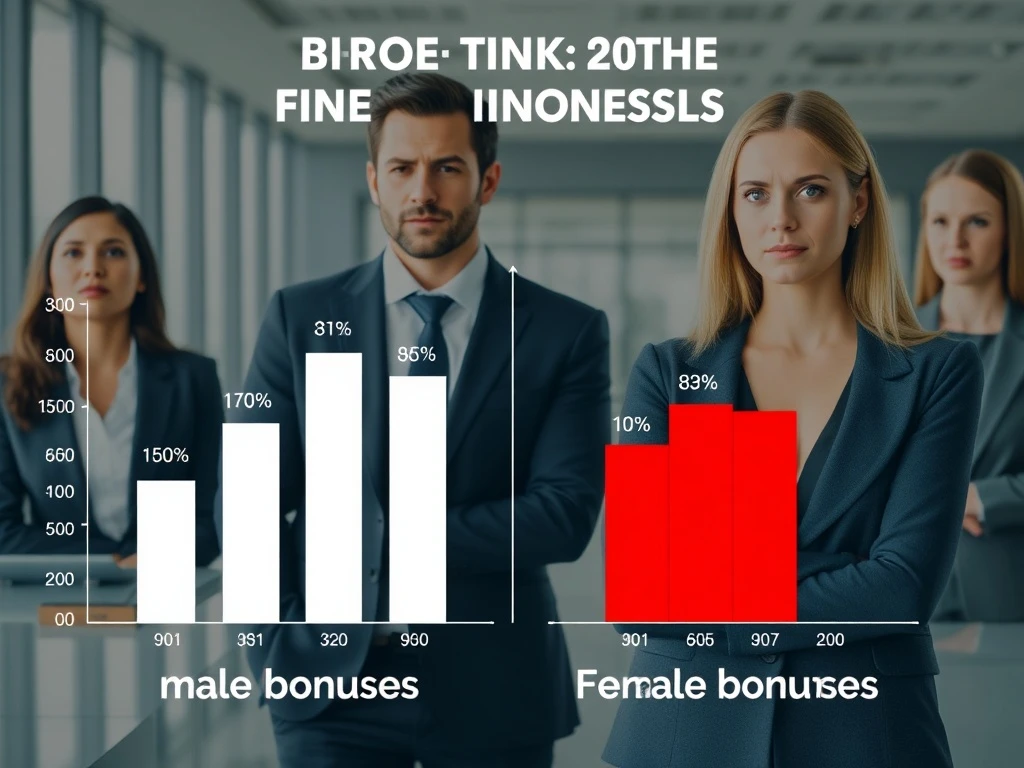New research exposes a disturbing gender bonus bias in UK workplaces, revealing that men are nearly one-and-a-half times more likely to receive performance bonuses than their female colleagues. This comprehensive study from HR data specialists Brightmine uncovers systemic inequalities that persist across industries and career levels.
Stark Numbers Reveal Gender Bonus Bias
Brightmine’s research demonstrates alarming disparities in bonus distribution. Consequently, men receive average bonuses of £4,913, representing 9.5% of their salary. Meanwhile, women average only £2,723, equivalent to just 6% of their earnings. This creates a significant gender bonus bias gap of £2,190. Therefore, men’s bonuses are 1.8 times higher than women’s.
Mid-Career Gender Bonus Bias Intensifies
The research shows the gender bonus bias becomes most pronounced during mid-life careers. Specifically, men in their early 50s earn average bonuses of £8,693. However, women in the same age group receive only £4,193. This represents a staggering gap of £4,500. Moreover, this disparity highlights how career progression exacerbates existing inequalities.
Role and Sector Variations in Bonus Distribution
Brightmine found dramatic variations across different job roles and sectors:
- Directors received average bonuses of £54,014 (33.6% of salary)
- Routine task providers received only £535 (2.2% of salary)
- Sales and marketing staff topped sector tables with 23.5% bonus rates
- Science roles saw the lowest average payouts at £726 (1.5%)
Private Sector Shows Highest Gender Bonus Bias
The private sector demonstrates the most significant gender bonus bias issues. Private sector employees enjoy the highest average payouts at £6,827 (12.3% of salary). However, only 10.5% of private-sector staff receive bonuses at all. Conversely, nearly 40% of manufacturing and production employees receive bonuses.
Expert Analysis on Systemic Gender Bonus Bias
Sheila Attwood, HR insights and data lead at Brightmine, emphasizes the systemic nature of this problem. “While bonuses are becoming scarcer across the workforce, the real story is the gap between males and females receiving bonuses,” she states. “This serves to highlight a continuing equity issue that organisations can no longer afford to ignore.”
Addressing Gender Bonus Bias Through Transparency
Brightmine urges organizations to conduct comprehensive audits of bonus practices. Specifically, they recommend examining both eligibility criteria and payout values. Furthermore, companies should ensure reward strategies promote fairness and retention. Additionally, transparent practices help reduce systemic gender bonus bias.
Growing Scrutiny on Workplace Reward Systems
The research adds to increasing pressure on businesses from multiple stakeholders. Investors, regulators, and employees now demand action on gender disparities. Consequently, companies must address both pay gaps and career progression issues. This comprehensive approach helps create more equitable workplaces.
Frequently Asked Questions
What is the main finding of the gender bonus bias research?
The research found men are 1.5 times more likely to receive bonuses than women, with male bonuses averaging 1.8 times higher amounts.
Which age group shows the largest gender bonus gap?
The disparity is most pronounced in early 50s professionals, where men receive £8,693 compared to women’s £4,193 – a £4,500 difference.
Which sector shows the highest bonus amounts?
Private sector employees receive the highest average bonuses at £6,827, representing 12.3% of their salary.
What recommendations does Brightmine provide to address this issue?
They recommend conducting bonus practice audits, ensuring transparency in reward strategies, and examining both eligibility and payout disparities.
How does this research relate to the gender pay gap?
This study reveals that bonus disparities contribute significantly to overall gender pay inequality, with the UK gender pay gap being underestimated for years.
Which job roles receive the highest bonus percentages?
Directors receive the highest bonus percentages at 33.6% of salary, while sales and marketing staff lead sector tables with 23.5% bonuses.








